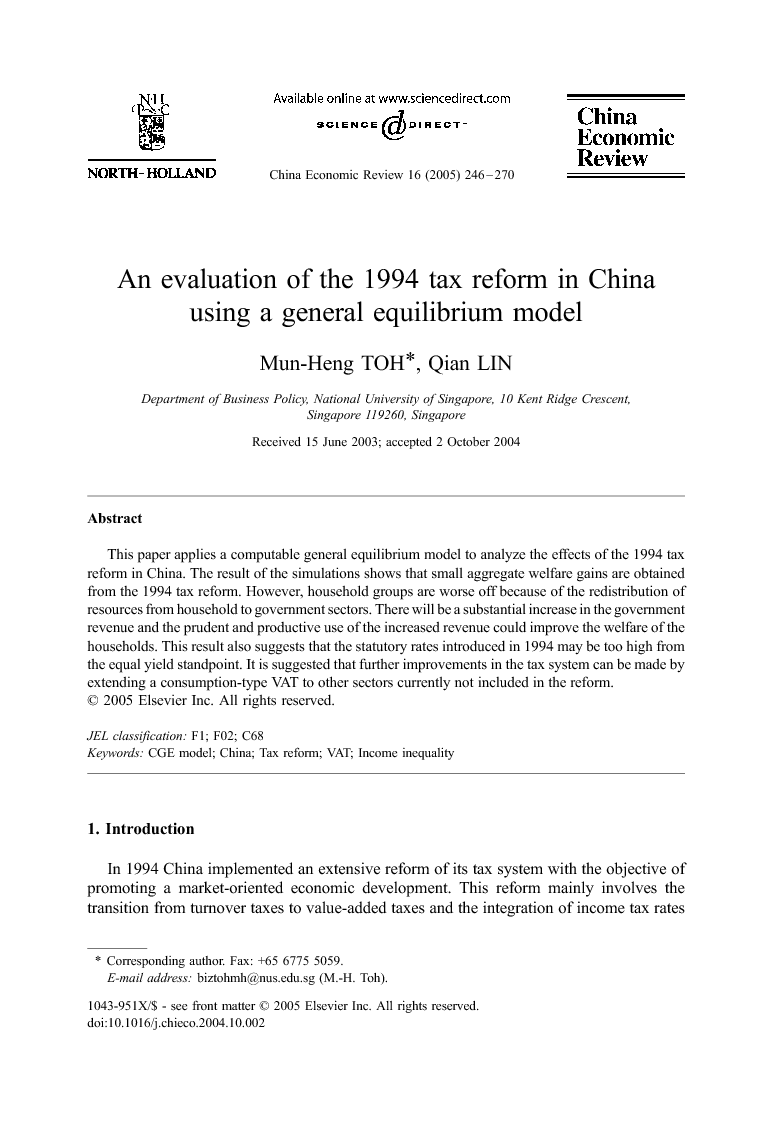ترجمه فارسی عنوان مقاله
یک ارزیابی از اصلاح مالیاتی سال 1994 در چین با استفاده از یک مدل تعادل عمومی
عنوان انگلیسی
An evaluation of the 1994 tax reform in China using a general equilibrium model
| کد مقاله | سال انتشار | تعداد صفحات مقاله انگلیسی |
|---|---|---|
| 28608 | 2005 | 25 صفحه PDF |
منبع

Publisher : Elsevier - Science Direct (الزویر - ساینس دایرکت)
Journal : China Economic Review, Volume 16, Issue 3, 2005, Pages 246–270
ترجمه کلمات کلیدی
مدل -
چین -
اصلاح مالیاتی -
مالیات بر ارزش افزوده -
نابرابری درآمد -
کلمات کلیدی انگلیسی
CGE model,
China,
Tax reform,
VAT,
Income inequality,

